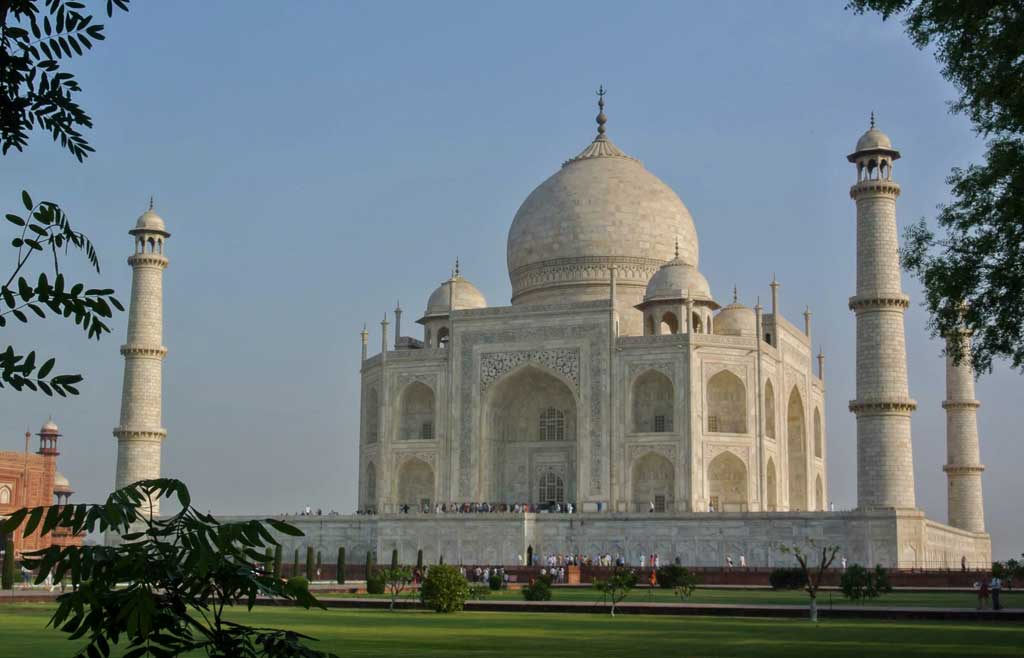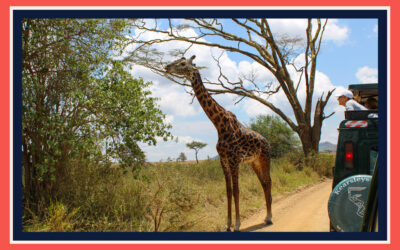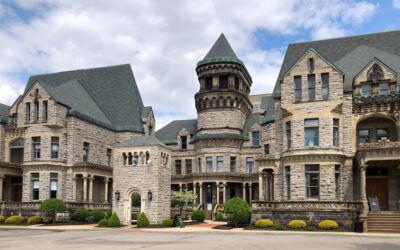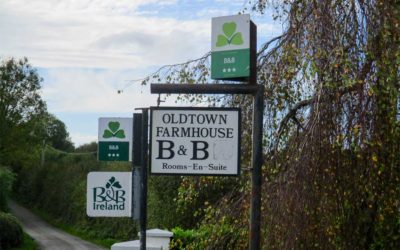The Taj Mahal was one destination on my bucket list that I didn’t think would get crossed off. But, as luck would have it, we were on a cruise that ended in Mumbai with an optional post cruise tour to India’s Golden Triangle, including the Taj Mahal. I was able to convince Art that this was the easiest way for us to get to see the Taj Mahal, and we really should include it.
Podcast
Since so many people have begun listening to podcasts recently, I am making my blog posts available as podcasts. You will find the companion podcast, India: Mumbai and the Golden Triangle available on this website, or you can find it on your favorite listening platform where you can subscribe to it as well. You will find Every Great Adventure… begins as a dream on Apple Podcasts (i-Tunes), Spotify, iHeartRADIO, Overcast, Google Podcasts, Breaker, Pocket Casts, and Radio Public.
Truth be told, I don’t know that we’ll ever get to this part of the world again, so I am glad we managed to include it. I’ll do a blog post on the rest of the cruise at a future date. Today, I’ll be focusing on our visit to Mumbai and India’s Golden Triangle.
It was the end of our Malabar Coast Cruise on Regent Seven Seas Voyager. The last night aboard our floating home, was spent in port in Mumbai. I do appreciate when a cruise that ends in an interesting port gives passengers a last night in port. It allows time to visit the city, at least a little, before having to begin the journey home.
Mumbai
Controlled chaos. That was my first impression of Mumbai. With a population density just over two and a half times that of NYC, it was noisy, crowded, smoggy, and dusty! The traffic was horrendous!
We got off the motor coach and reality set in. Now we had to keep up with our tour guide.
Negotiating the crowd was akin to riding in bumping cars with people weaving in and out and often you would stop to let someone by and the person behind you would gently bump into you.
People around us were speaking languages completely unfamiliar to me and then I would hear some English thrown in the mix.
It was necessary to remain alert especially near the street as it would be all too easy to step in front of one of the small motor bikes that would appear out of nowhere.
I’m not sure how people knew that this light haired, blue eyed, pale skinned girl was a tourist, but they did. People stopped us as we were walking, attempting get us to buy something or give them money. They would give us blessings and tie little thread bracelets to our wrists. As most spoke English it was easy to say no, but they were persistent, and it would take several times before they finally gave up.
Gateway to India
We weaved through the crowded square to the Gateway to India. The monumental arch completed in 1924 was constructed to commemorate King George V and Queen Mary’s visit in 1911. It’s a large tourist attraction in Mumbai, and near a large, busy, passenger ferry port. Like any bustling tourist destination, visitors need to beware of pickpockets and other petty thieves here.
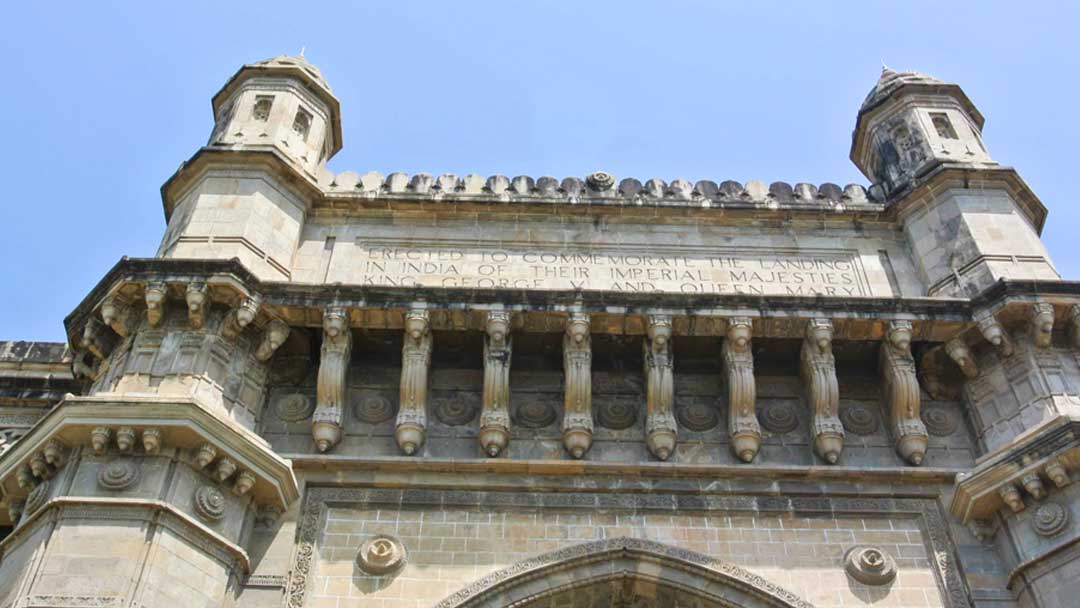
We had time to walk around and take photos of the monument as we waited for our ferry to take us over to Elephanta Island. Some of the ferries looked to be in better shape than others, but we made the trip from the busy port with no problem.
Elephanta Island
Upon arrival on the island there’s a small train, into which passengers are tightly packed, allowing you to ride to the base of the hill if you’d rather not walk. From the base it’s a climb of 120 steps to get to the caves.
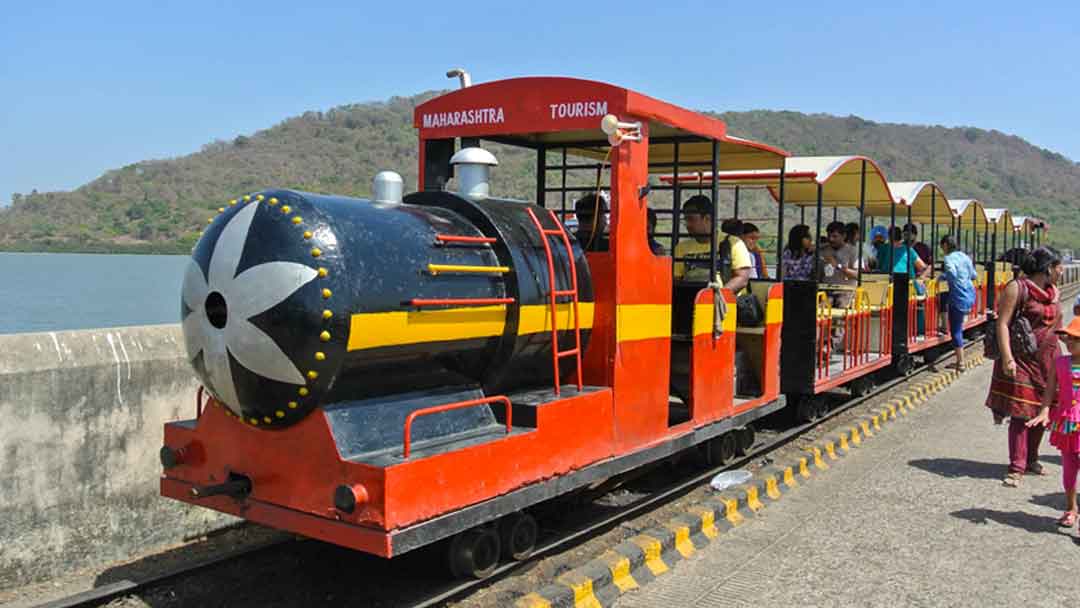
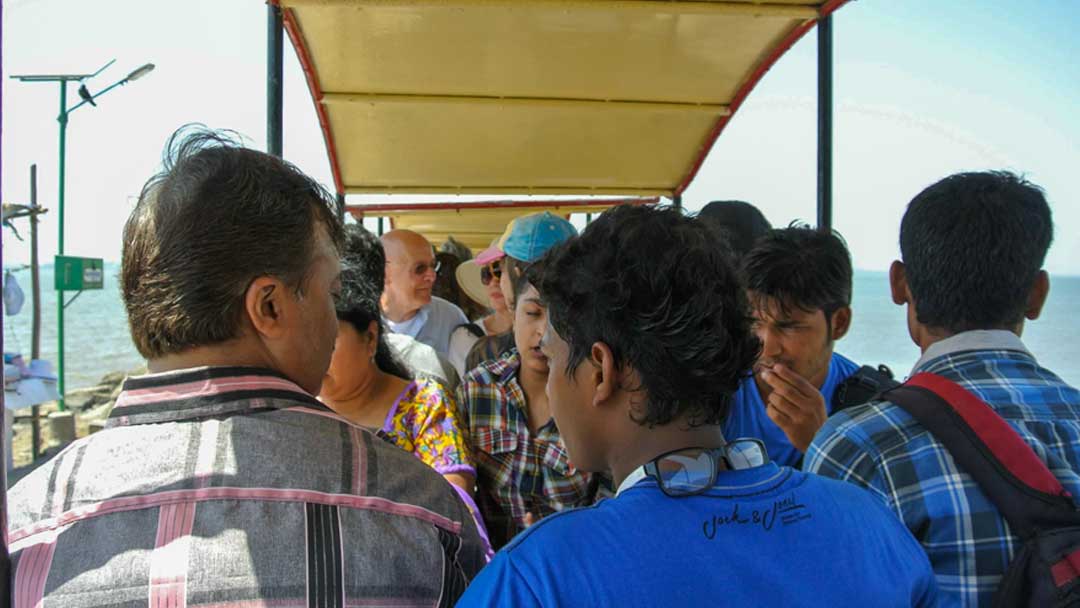
At the base of the hill are numerous snack bars and shops. Shops also line the stair way up to the caves, so there’s plenty of opportunity to shop, if that’s your thing.
Beware of the Monkeys!
There are small monkeys everywhere and they are more than willing to take any food you may have carelessly tucked into a bag, or your pocket. If you’ve ever been to Gibralter, they reminded me of the monkeys there.
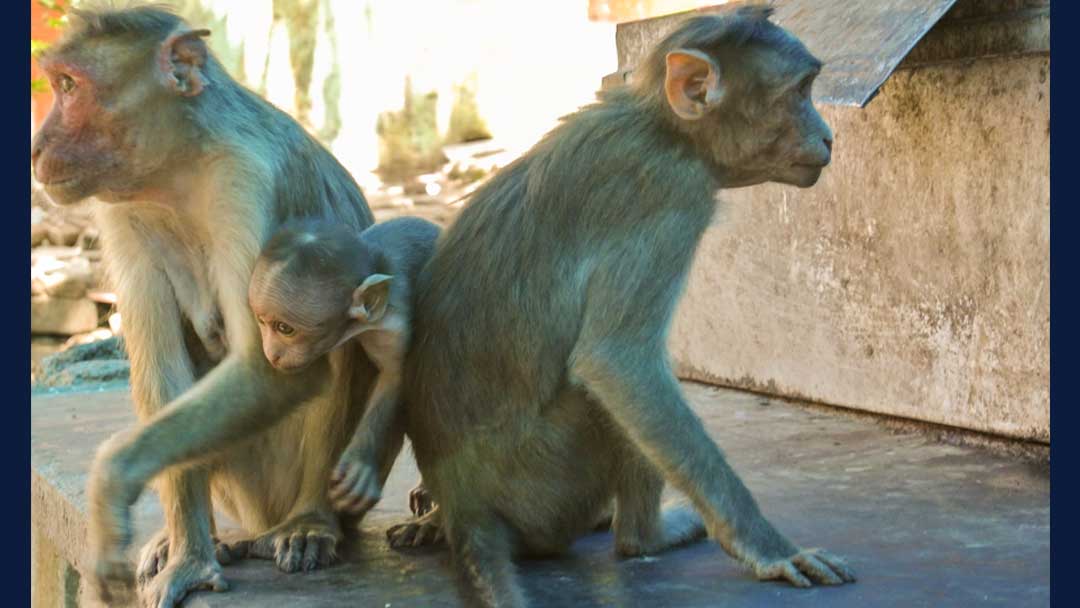
Our guide had purchased a bottle of orange drink and explained that the monkeys really like it and will take it right out of your hand if you are not paying attention. Then someone asked her a question, and as she was talking, she dropped her hand, with the drink in it, down by her side. It was amazing how quickly a little monkey ran over to grab it. Fortunately, someone saw what was about to happen and got the guide’s attention just as the monkey put its hand on the drink.
There were a few other animals on the island as well, a couple of cows and lots of, what appeared to be stray, dogs.
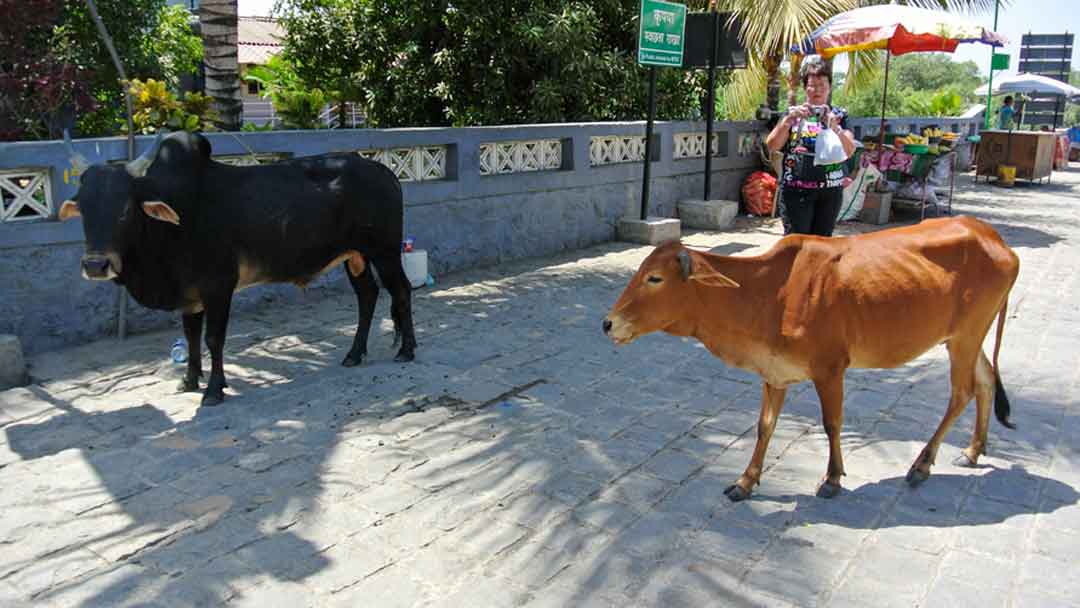
Elephanta Island was really interesting. Art nor I had never heard of this UNESCO World Heritage Site before our trip. The caves were carved into the hill to serve as temples. In addition to pillars, the walls of the nearly 55,000 square feet of caves are elaborately carved with images from Indian mythology.
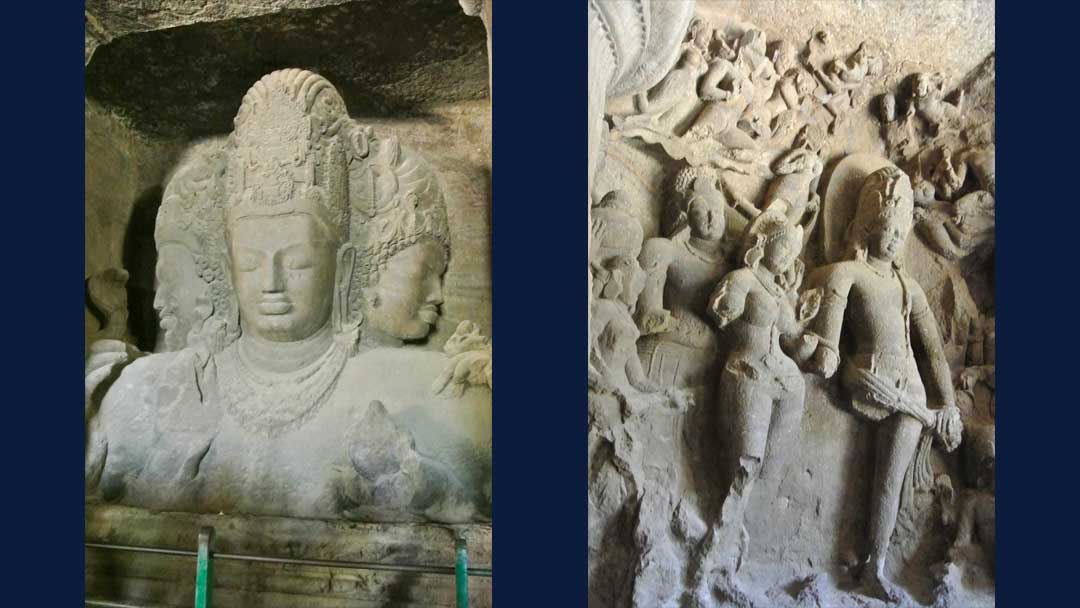
Over the years the carvings had been damaged but were restored in the 1970s. Today Elephanta Island is a very popular tourist destination, and certainly worth seeing.
A Theory on the Carvings
One interesting little tidbit we picked up from our tour guide. The current thinking is that a statue made with multiple heads or more than two arms, it is to indicate movement. So, when you see the statue with six arms, that indicates the arms are moving up and down. Three heads (left profile, center, right profile) indicate the head is turning from side to side.
The Golden Triangle
The next morning, we disembarked the Seven Seas Voyager and began our tour of what is known as the Golden Triangle of India. The Golden Triangle is the tourist circuit between the cities of New Dehli, Agra and Jaipur.
Jaipur
Our first stop was in Jaipur, also known as the “Pink City.” Although not actually pink, many of the buildings are constructed of red sandstone; others were coated with an ochre color to welcome the Prince of Wales in 1905 and has remained so ever since.
Although, busy, its not as large as Mumbai, and did not feel nearly as chaotic. Traffic was still crazy, but we found that to be true just about every place we visited in India.
Sawai Jai Singh II
Jaipur is named after its founder, Sawai Jai Singh II, a Rajput King. Jai Singh was known for his intellect and had a great interest in mathematics, architecture and astronomy. Based on his work designing this city he was also heralded as a keen planner.
After founding the city in 1927, Jai Singh began the construction of the City Palace, where he and his family lived. In fact, his descendants still reside there today.
City Palace
Our tour began with the City Palace. Of course, one of the first things we came upon, was a snake charmer. Anyone who knows me, knows that snakes are my least favorite of all God’s creatures. They just give me the creeps. Anyway, I watched, long enough to take a photo, and then went on my way through the gateway, elaborately painted with flowers and vines, into the palace.

Inside the palace we visited the Mubarak Mahal where the royal family would receive their guests. This building, which is identical on all four sides, now houses museum offices on the first floor and a textile gallery on the second. Made of white marble and beige stone, the balcony railings and trim work are delicately carved.
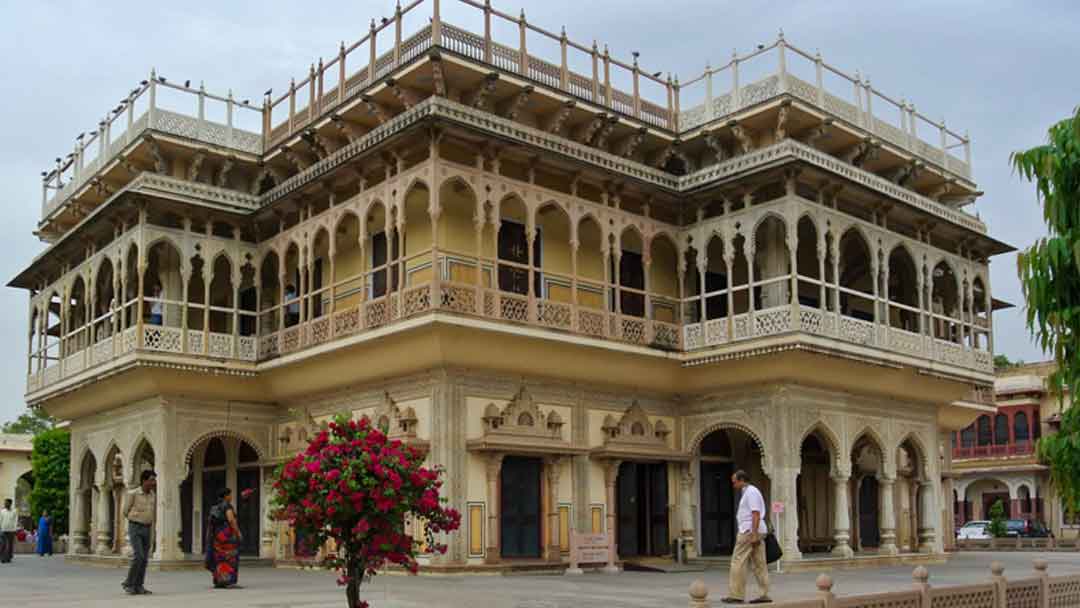
While at the palace I had a mehndi, or henna design, placed on my hand. I don’t recall how long it last, I don’t think it was more than a few weeks.
Jantar Mantar
As I mentioned earlier, Jai Singh was an avid astronomer. He constructed five different astronomical observation sites in India, some of which no longer exist. The site, called a Jantar Mantar, was built at the City Palace between 1728 and 1734, is very well preserved. It is said that the instruments, which include the world’s largest sundial, were extremely accurate. In addition to telling time, the instruments are used for a variety of purposes, such as predicting eclipses, or locating celestial bodies, all with the naked eye. This particular Jantar Mantar is also a UNESCO World Heritage Site.
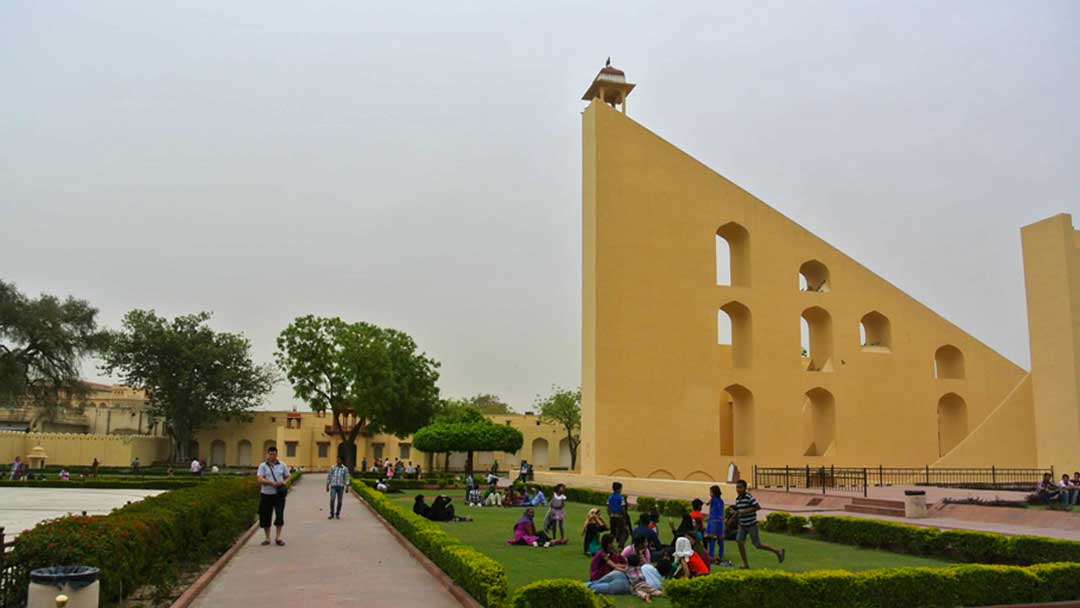
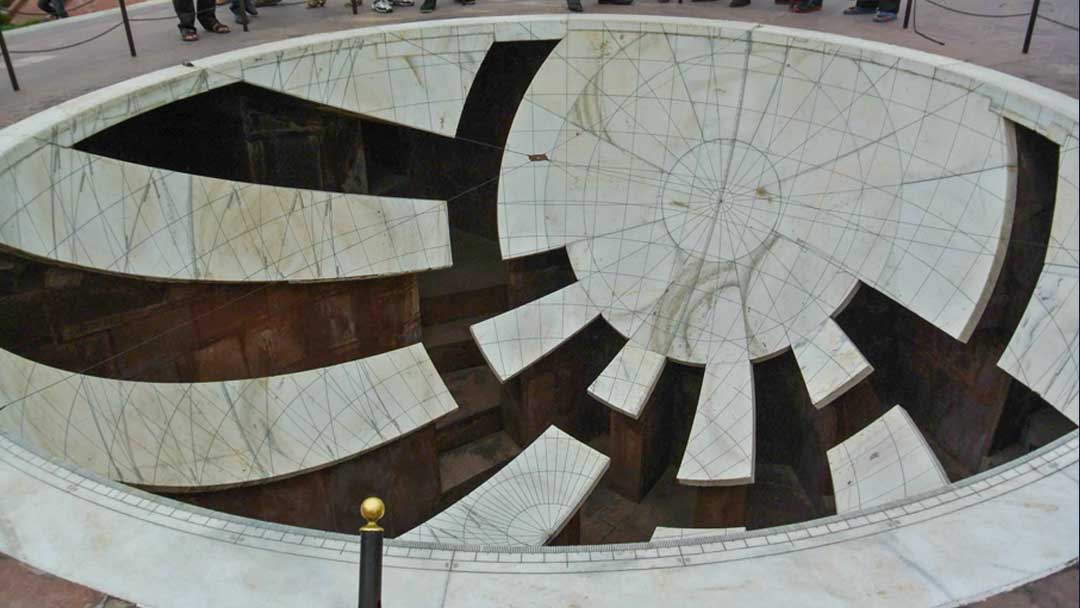
Best Exotic Marigold Hotel
If you have watched the Best Exotic Marigold Hotel, a good deal of it was filmed in Jaipur. I do recommend it if you haven’t seen it; it’s a movie to which we Baby Boomers can relate. The sequel wasn’t quite as good, but still entertaining.
(Here’s a video clip about the making of the movie, which shows you a bit more of what India really looks like.
Hawa Mahal
We drove by the Hawa Mahal, another part of the City Palace. This elaborate five story structure, made of pink and red sandstone, has 953 windows facing the road. Each window is covered with a decorative lattice that allowed the royal women inside the ability to watch the outside world and not be seen without their face coverings.
Unfortunately, the Hawa Mahal was encased in bamboo scaffolding while undergoing renovation. Art said it reminded him of the scaffolding he used to see in Saigon. All I know is it didn’t look very secure to me.
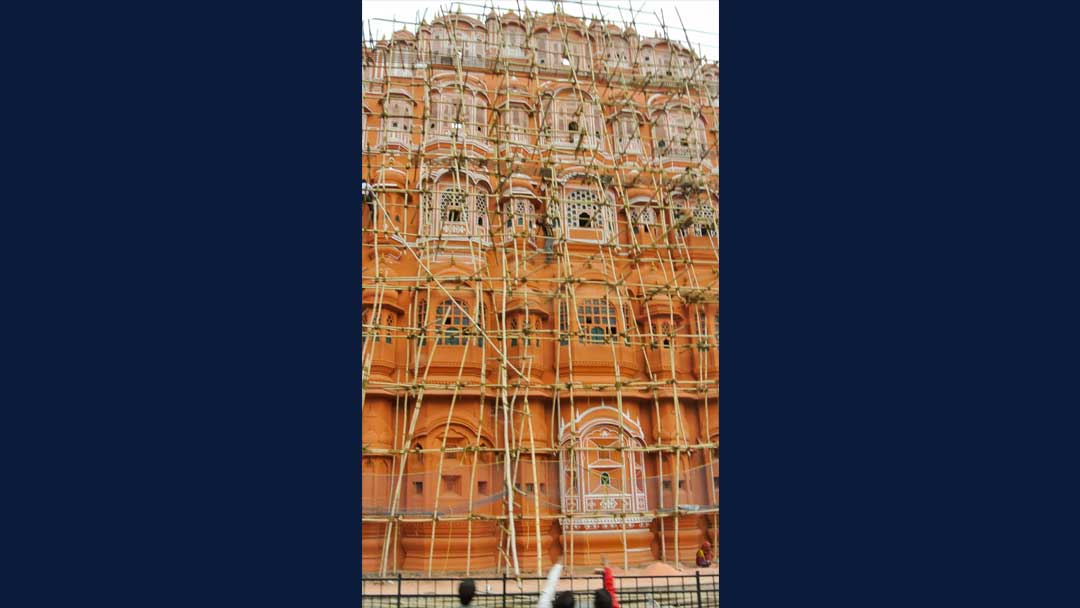
Rural Life
Riding in the motorcoach from Jaipur to Agra was an eye-opening experience, allowing us a small peek into everyday life in the country.
As we traveled through the more rural areas we saw more and more people using animals for transportation. Of course, there were cows, which were not always contained. Our motorcoach did have one close call with a cow on the road. Don’t forget cows are considered sacred animals in India, and to hit one would have been a big issue.
I’m not sure why, but I never associated India with camels. Yet here they were, pulling carts and even being herded along the road.
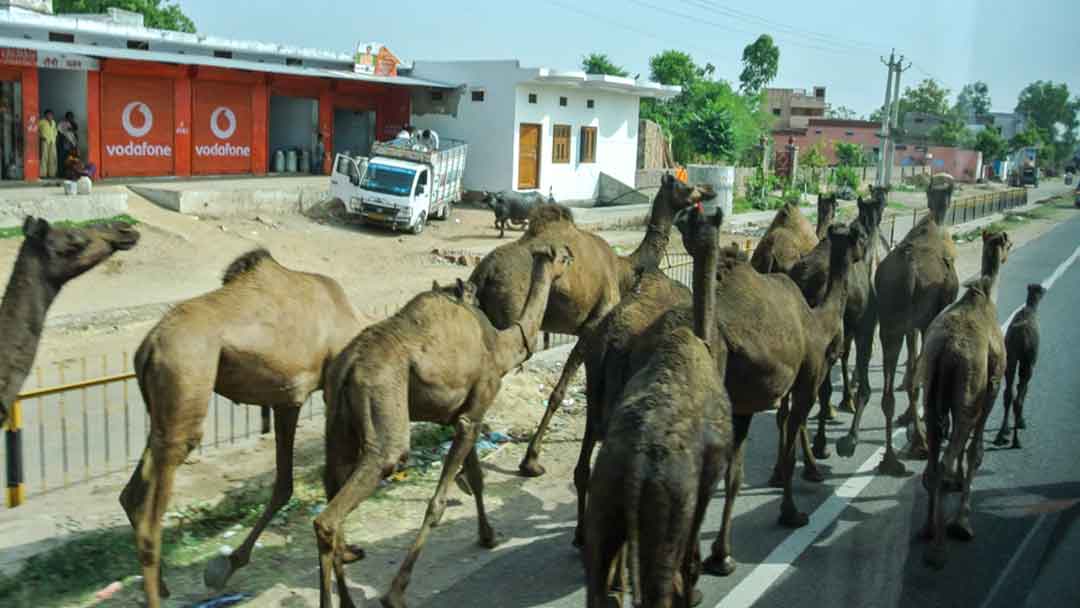
Coming from the US, it was jarring to see what we consider unsafe practices used without a thought. Rickshaws stuffed with more people than they were intended to carry. Children being transported in an open trailer behind a tractor. The most interesting was what appeared to be a family of four on a motorcycle. Well, at least the driver was wearing a helmet.
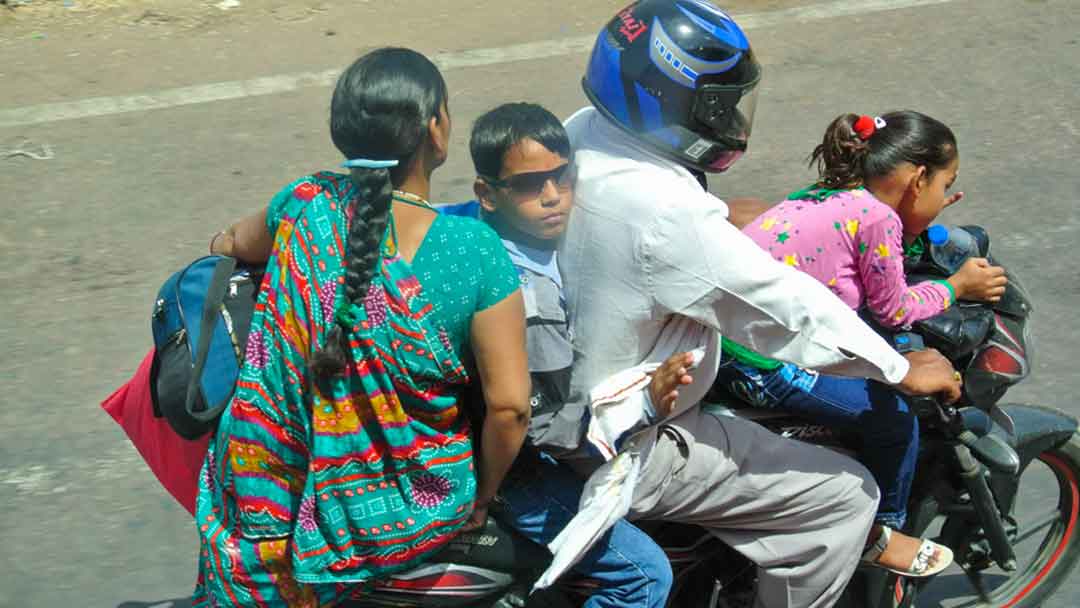
As we drove along, we noticed little huts alongside the road. After seeing a few of them, we finally figured out what they were; stacks of dung patties to be used as fuel. The dried patties had been placed in a small straw hut. It looked as though anyone could just walk up and take what they needed.
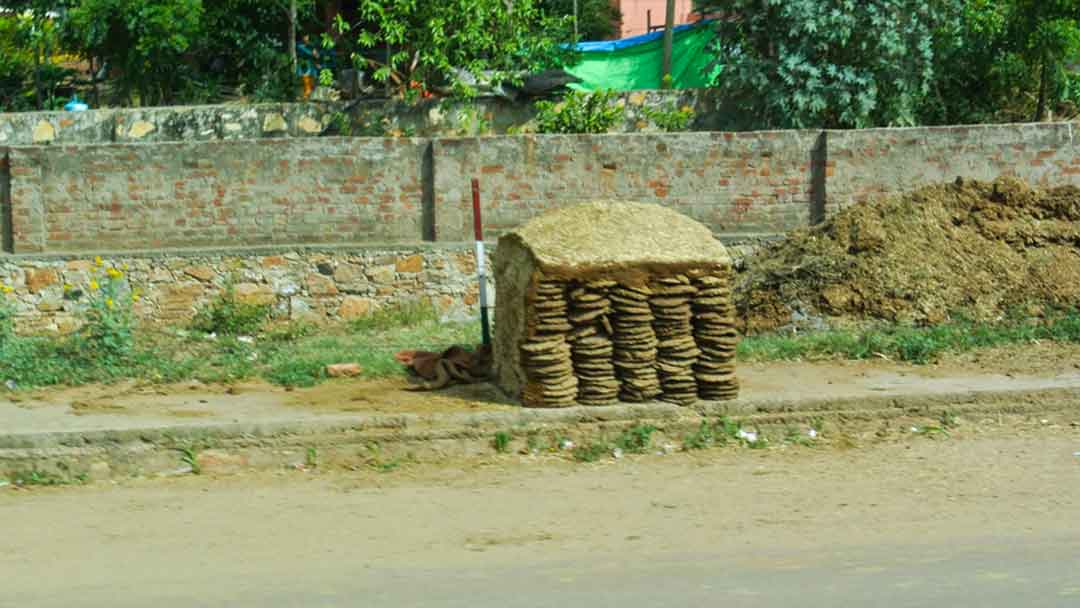
Agra
Agra Fort
Our first stop in Agra, was the Agra Fort, seat of the Mughal Empire for many years. This large fort, constructed of red sandstone, was built between 1565 and 1573 and is still in active use today. Essentially a walled city in its day, the fort is also a UNESCO World Heritage Site.


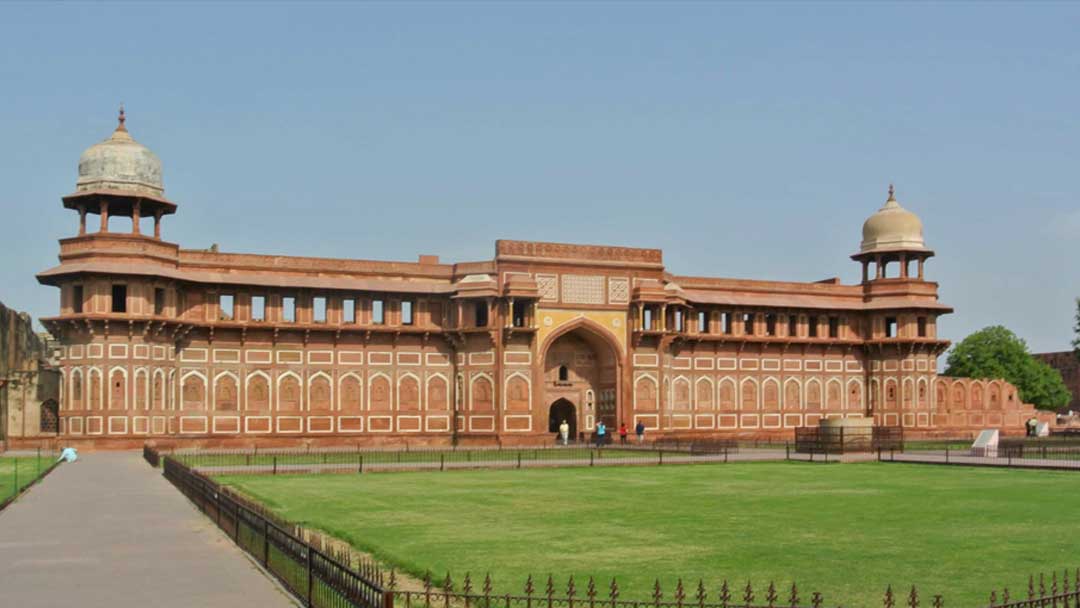
It was from Agra Fort we had our first glimpse of the Taj Mahal. One of the most famous and recognizable buildings in the world.
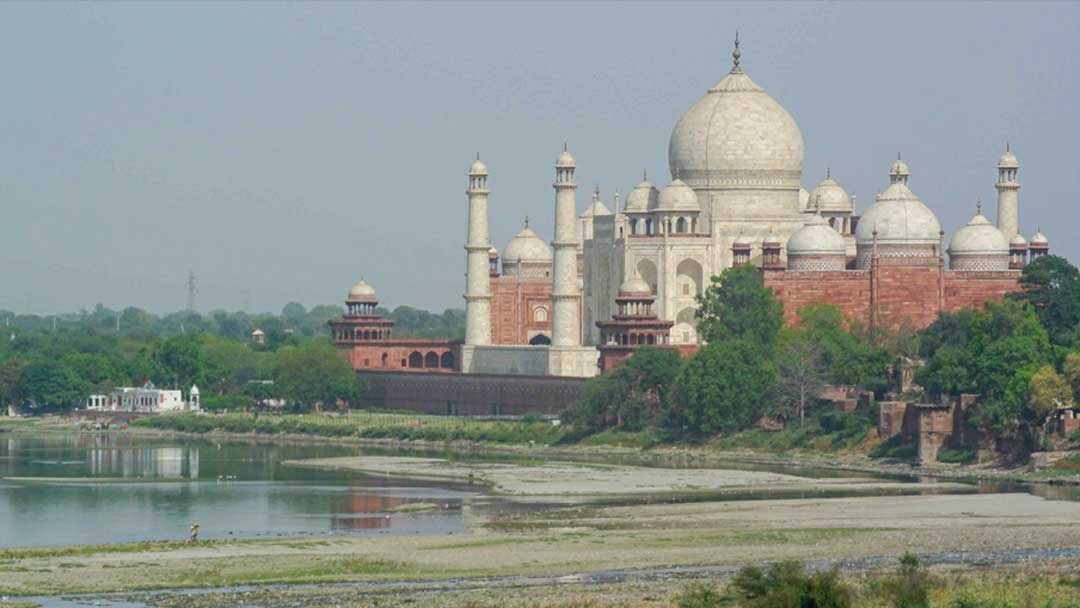
Inlay
From Agra Fort we went to a factory where they made inlaid products. It was here we were provided a demonstration of just how the tiny pieces of semi-precious stone are ground and shaped prior to being inlaid in marble.

Taj Mahal
We all know that the Taj Mahal was built by the ruler of the Mughal Empire as a memorial to his favorite wife. Well, that’s the short story. Here’s a little more background. Since conflicting information abounds, I used the official website of the Taj Mahal as my source. (Unfortunately, the website seems to have gone down. If it comes back up, I will publish a link to it.)
Shah Jahan and Mumtaz
Shah Jahan was the Fifth Mughal Emperor and reigned from 1628 to 1658. In 1607 at the age of 15 he was betrothed to the young woman who would become Mumtaz Mahal (she was 14 at that time). However, the court astrologers predicted they would have a happy marriage only if they married on May 10, 1612. So, they waited. During their five year wait, Shah Jahan took two other wives.
There is conflicting information on how many wives Shah Jahan had. The official website lists nine, but other sources state there were as many as 11.
One thing that is not disputed is that it was his third wife, upon whom he bestowed the title Mumtaz Mahal Begum, or Chosen One of the Palace, that was Shah Jahan’s true love. His constant companion, she traveled with him throughout the empire during their marriage.
Mumtaz’ Death
During their 19 year marriage, Shah Jahan and Mumtaz had 13 children together. Mumtaz hemmoraged to death after bearing her 13th child.
When Mumtaz died in 1631, Shah Jahan was inconsolable and mourned her death for two years. It was during this time that he designed the Taj Mahal, or Crown Palace.
Four Promises
Before her death, Mumtaz asked four things of her husband. She asked that he:
- Build a tomb for her.
- Remarry.
- Be kind to their children.
- Visit her tomb each year, on the anniversary of her death.
Okay, now you know a little more about Shah Jahan and Mumtaz. Now, I’ll share a little more about my experience.
My Visit to the Taj Mahal
Our visit to the Taj Mahal was scheduled for the early morning. The complex opens one half hour before sunrise, and we were there plenty early. Art and I joined the queue with hundreds of others. Once the gates opened, all bags were checked by security and we passed through a metal detector as well.
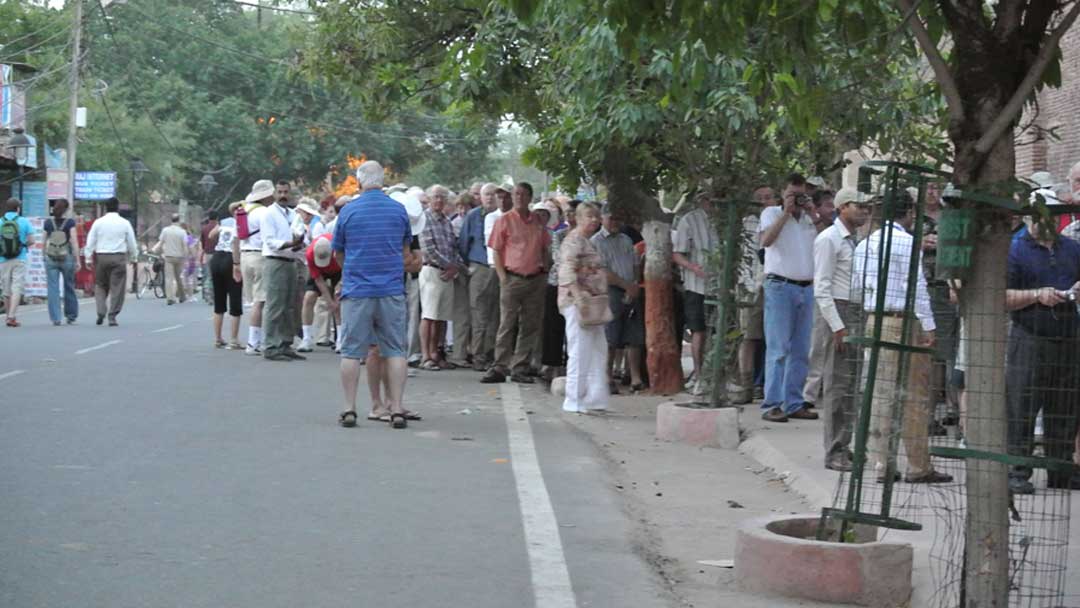
Once through security, we regrouped with our guide who provided us with an overview of the grounds. We were then free to roam the grounds on our own, with a designated time to meet up for our return to the hotel.
In a few steps we arrived at the main gate, perfectly framing the mausoleum, which was tinted slightly pink by the rising sun.
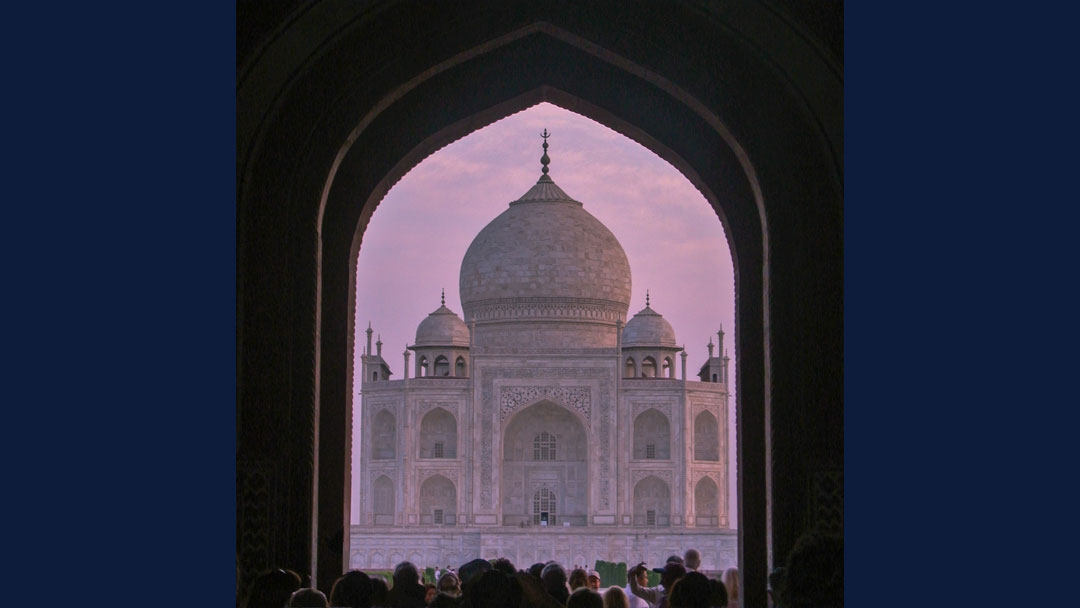
Taj Mahal Complex
After passing through the gate, I was stunned. I had no idea how large the entire complex was. Even though the mausoleum was completed in 1648, 17 years after her death, the remainder of the site, as we see it today, took an additional 5 years to complete. Over 22,000 construction workers and artisans, working a total of 22 years, were required to bring Shah Jahan’s vision to reality.
The large reflecting pool in front of the mausoleum was, unfortunately, dry as it was being repaired during our visit.
There are large grass areas, which used to house gardens on either side of the reflecting pool. The gardens were replaced with grass by the British during a restoration project in the early 1900’s.
Mosque and Guest House
I was surprised to see two buildings flanking the mausoleum, a mosque and a guest house. The two buildings mirror one another and are constructed of red sandstone. I had no idea there were any other buildings in the complex. I don’t recall ever seeing pictures of them.
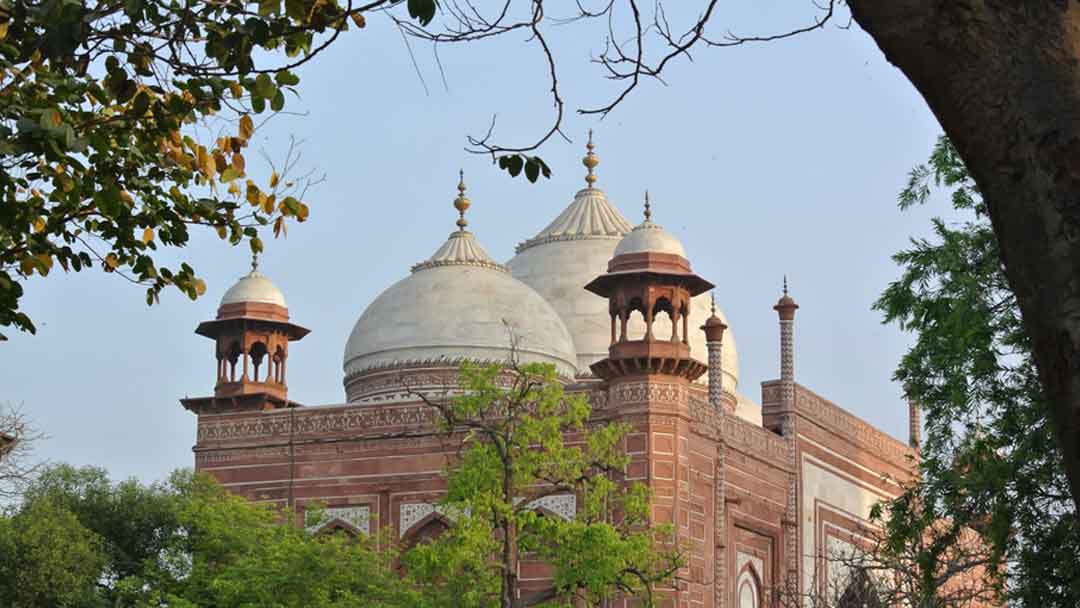
The Mausoleum
As we made our way up to the mausoleum, I began to realize just how big it is. The central dome alone is nearly 115 feet tall. Each of the four minarets check in at 130 feet. In all, the entire building stands 240 feet in height. Next time you see photos, look for people so you can get a better perspective on its size.
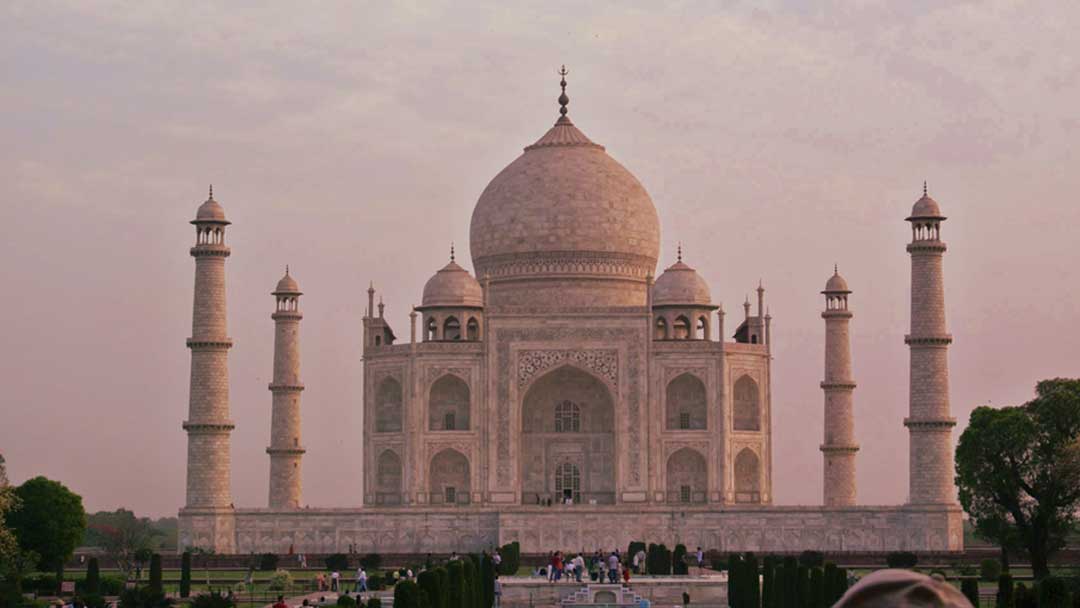
Intricate Decoration
It’s obvious in all the photos, that the mausoleum is constructed of white marble. What you don’t see is the intricate, detailed decoration.
The inlay work is most remarkable. As many as 28 different precious and semi-precious stones were used in the calligraphy and floral decorations on the walls. Some of the pieces of stone used in the inlay are no bigger than a fingertip. Each one handmade and placed in the marble.
The interior includes marble carved lattice. In places the marble is carved with bas reliefs.

Although the line we were in moved slowly through the mausoleum, it was fine with me as it allowed us to really appreciate the detailed workmanship involved in the construction of this beautiful testament of love.
Promises Kept
Shah Jahan was able to keep all but the last of the four promises he made to his beloved Mumtaz. In 1958 he was overthrown by his own son, Aurangzeb, and imprisoned in Agra Fort for the last eight years of his life.
I’m not sure if it was in mockery or compassion, but his son did allow him a view of the Taj Mahal from his confinement. Shah Jahan was finally reunited with Mumtaz upon his death and internment next to her within the mausoleum.

Taj Mahal Renovation
Unfortunately, the Taj Mahal did not remain unscathed during the Indian Rebellion of 1857. The mausoleum was defaced by British soldiers and government officials. By the end of the 19th century the Taj Mahal had fallen into disrepair when Lord Curzon, the British Viceroy, ordered its restoration which was completed in 1908.
Today, the Taj Mahal complex, a designated UNESCO World Heritage Site is visited by some 7 to 8 million people every year.
Delhi
From Agra, we headed to our final destination, Delhi. The timing of our arrival didn’t allow for much sight seeing here. We did stop at Humayun’s Tomb, the first garden tomb ever constructed in India. It is said that this tomb, another UNESCO World Heritage Site, was the inspiration for the Taj Mahal.

Although we were able to do a driving tour through Old Dehli, we didn’t have time to visit any other sites.
Brief but Enlightening
All in all, our very brief tour of Mumbai and the Golden Triangle was very enlightening. I learned a lot more than I ever expected. I would have liked to have had more time to really experience this culture, which is very different than our Western culture. If the opportunity presents itself for me to return to the sub-continent of India, I will absolutely say “Yes!”
How about you? Have your travels included a trip to magnificent India and the Taj Mahal? Were you as moved by Shah Jahan’s love of Mumtaz as I? I’d love to hear your thoughts or any tips tips you’d like to share. Don’t forget to subscribe and share this blog post with your friends!
Recent Blog Posts
Destinations, travel tips, my thoughts on travel and more can be found in my blog posts.
Five Ways to Make a Safari More Affordable
You’ve been visualizing yourself on an African safari for ages and finally decided it’s time. But, the cost! Is it worth the expense? Don’t give up on that dream! I’ll explain a bit more about why it costs so much and suggest five ways to make a safari more affordable.
Shawshank Redemption Fans’ Ultimate Geek Out at Prison
It’s the ultimate geek out for fans of The Shawshank Redemption! Tour the filming site of The Shawshank Redemption, the Ohio State Reformatory in Mansfield, OH. A great way to spend a day and reminisce about your favorite scenes from the movie!
Staying at Bed and Breakfasts in Ireland; The Right Choice?
Have you always dreamed of driving around Ireland? Touring the Emerald Isle is a wonderful experience. Make your experience even more authentic by staying at Bed and Breakfasts in Irela
[convertkit form=1116972]
